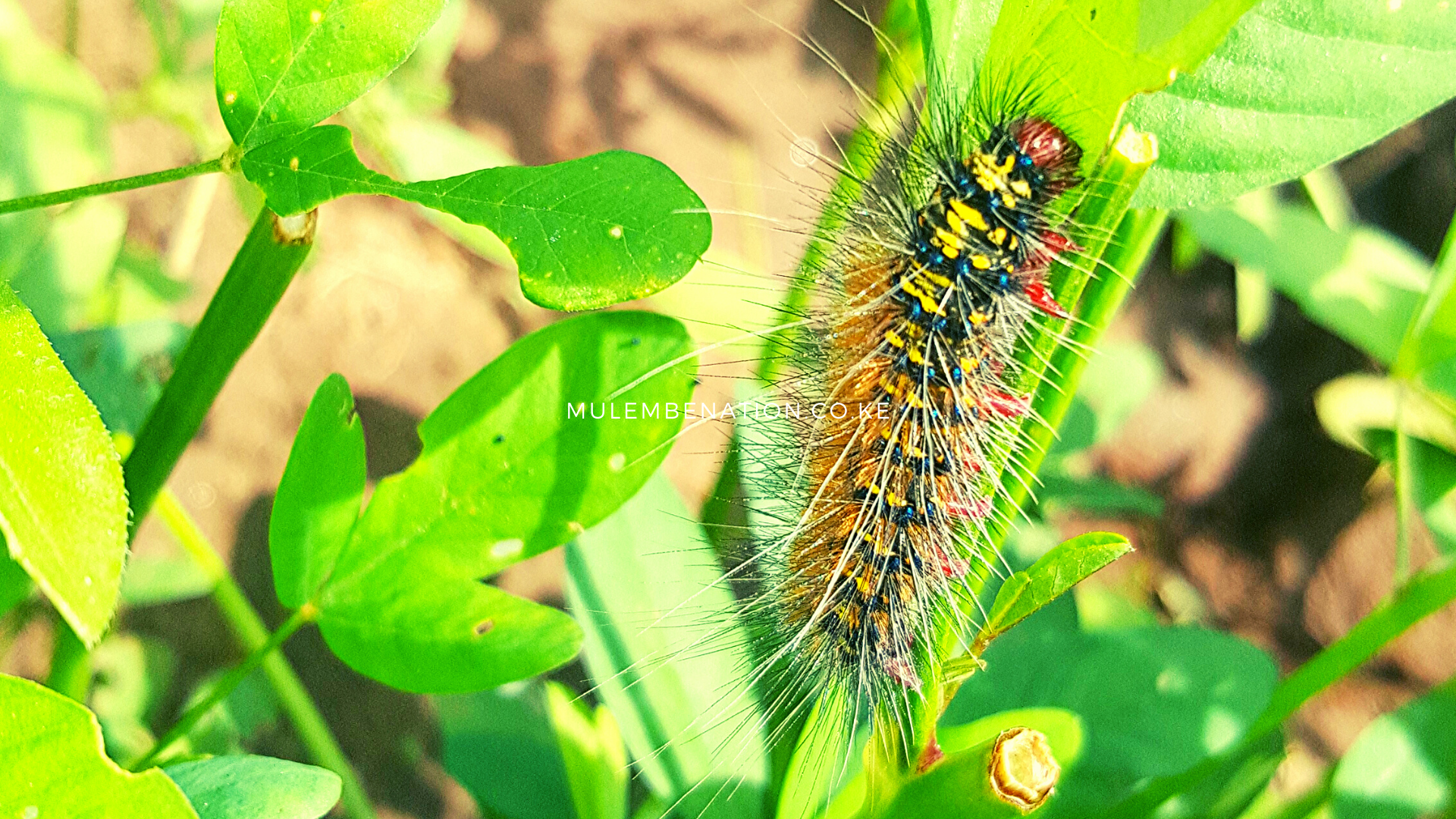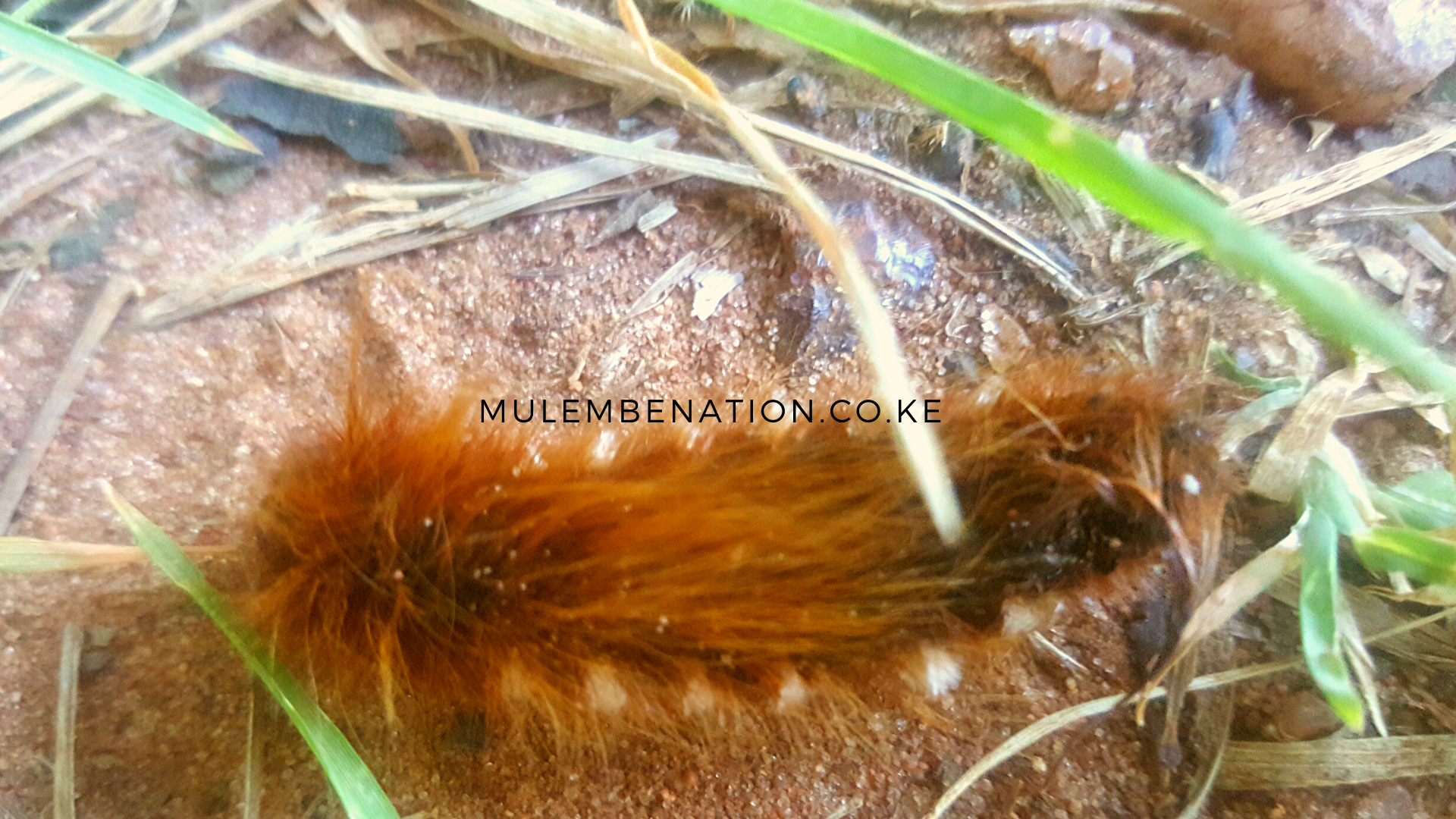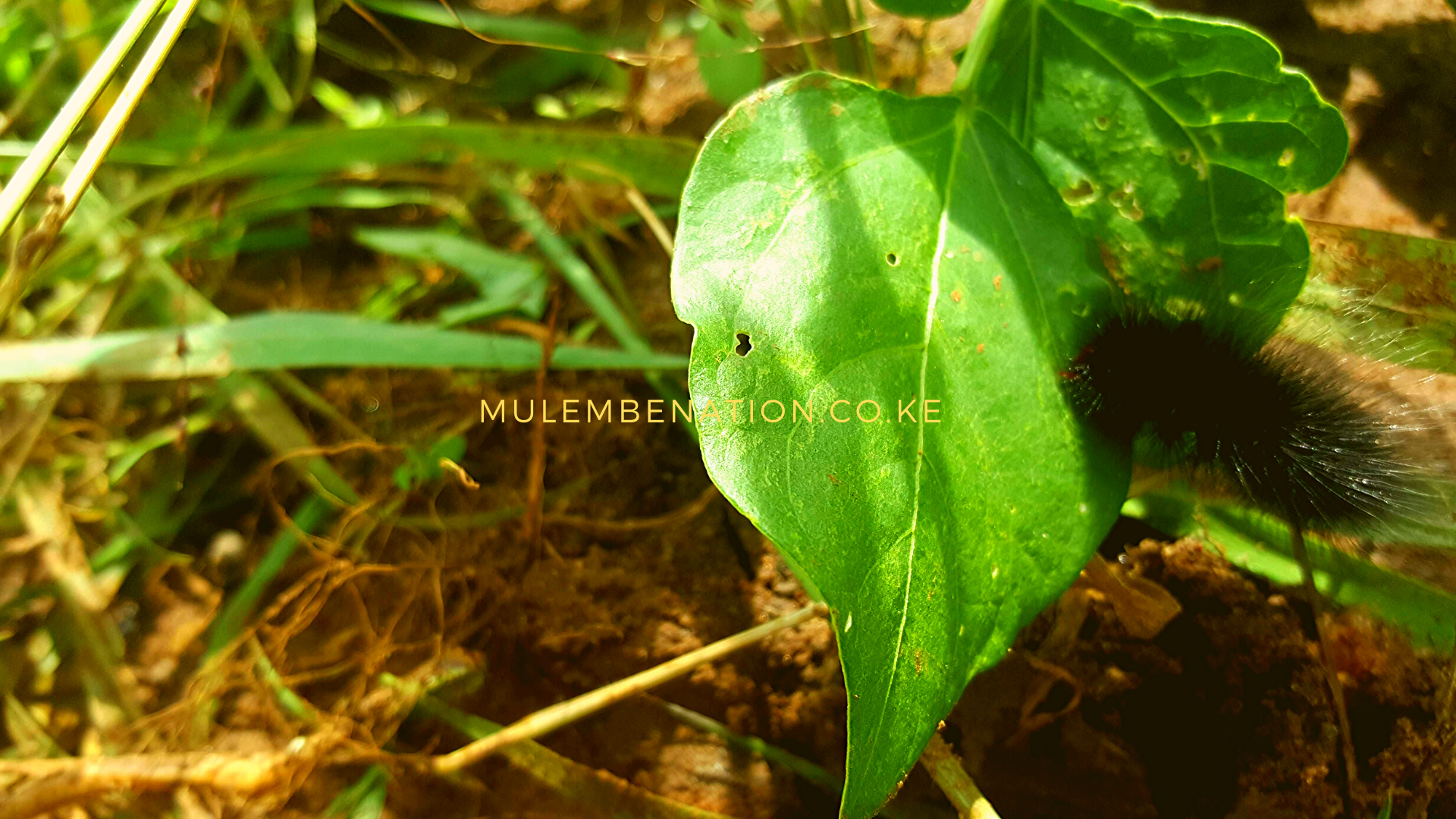Back when I was a small girl, the days when I was still dressed like eswa efure, a termite with without wings, life in the village had its joys and pains. One of the pains I encountered was the need for me to deal with caterpillars. Let me just say it upfront. I hate and fear caterpillars. To date, that is. Much to my terror, there was no escaping the hairy bugs as they were many a plenty in the virgin lands of my ancestry. My people, the Bukusu call caterpillars lisa.
Subscribe to Mulembe Weekly
Get culture, language, stories and discussions in your inbox every Friday 5 PM East Africa Time
Jump to: Lisa lilela bana | Lisa lisabulukhwe | Lisa lituma molu | Lisa nabafu | Siecheche | Lisa lipatikha
As a child, knowing about how to live with lisa was one of those things that took the format of: the experience, then the lesson. After my fair share of nasty encounters with the following caterpillars, my lovely mother educated me on their ways and their importance to my people. I urge you to indulge so at to be forewarned.
Bukusu language or Lubukusu is the tongue of Babukusu, the largest of the 18 houses of mulembe. Learn how to speak Bukusu language through our free lessons in Bukusu language; our stories on Bukusu culture that harness the richness of Lubukusu in their narrative; our continuous search for the meaning of different Bukusu proverbs and sayings; and if your Lubukusu is already good enough, sharpen and challenge yourself with our new blog sibukusu that covers everything Bukusu in the purest Lubukusu.
Get started with our mega post: 130+ common Bukusu words and phrases their meaning, translation and pronunciation.
Lisa lilela bana
Lisa lilela bana, is the caterpillar that soothes children. For this reason, it is considered the mildest of them all. It comes with a brownish to reddish head, yellow abdomen with black pin like stripes. In my village, it was the commonest of all caterpillars.

My people believed that this caterpillar is harmless. Thus, if it happens to crawl on you, an act we refer to as lisa khurana, the outcome is believed to be minimal. I used to hold this belief so dear till one day when taking care of animals near the river.
My naughty cousin Nabilabi sought to find out from me if I believed that lisa lilela bana were indeed harmless. The stupid and naive me chose to affirm my bravery. She then asked me to remove my blouse. All this while, she agitated the little lisa lilela bana that was resting on a branch of chingayu by prodding it with a stick.
Disturbed from its afternoon walkabout, the lisa lilela bana got so agitated that it tried to escape. At this moment, with a swift action of her wrist, she threw the agitated lisa lilela bana on my bare back. The consequences were not as mild as I had anticipated. Let’s just say, my mother and her mother settled the dispute later that evening. Meaning, we both got reacquainted with a few strokes of lukhendu.
Lisabulukhwe
Lisa lisabulukhwe was the next common lisa that one came across in my village. These ones were usually sighted from the beginning of the rainy season. They remained with us through out the crop season, especially gracing our homes during beans harvesting time.
Lisa lisabulukhwe are grey to brown in color with lots of curly hair. Girls with curly hair would be described Nanjala we lichune oli lisa lisabulukhwe. Translated as: Nanjala the one with curly hair like that of lisa lisabulukhwe.

In terms of character, this caterpillar is manner-less. It intrudes spaces uninvited. Lisabulukhwe seems to love warm places such as blankets and even stored or hung clothes. Given its sneaky ways, by the time one realizes it is there, it most often has already left its entire hair on the human. Besides, my mother made me believe that it can also bite when need be.
Lisabulukhwe and the origin of a Bukusu saying
We have a saying describing its dark heart, kumwoyo kwe lisa translated as dark heart of lisa. This Bukusu saying is used to describe someone who has a very black heart. One who can unleash evil in toxic doses. It is my firm belief that it is lisabulukhwe that gave the caterpillar clan this unfortunate association among my people.
If you doubt my assertions, consider the following story from my childhood. It’s a story of how lisabukukhwe, just like someone with a dark heart, would perennially and without fail ruin a noble task.
Terror by lisabulukhwe: The was a joyful sorrow of khuula kamakanda.
Growing up, lisabukukhwe terrorized the hell out of my little soul. So my parents were teachers who farmed so as to supplement their meager earning. To feed us, they inter-cropped maize and beans on our humble farm. It always happened that the bean crop matured before the maize. It being that the labor to work the farms came from us, once the bean crop matured, without being asked, after school we divided the harvest work among ourselves.
One group uprooted the beans and assembled them in between the maize rows. Another group would then carry the uprooted beans to one side of the farm. A third group would be tasked with ferrying the beans back home to the granary or the designated storage place.
After the harvesting phase, we would embark on drying and ‘beating’ the beans out of their pods. We called the act of ‘beating’ beans khuula kamakanda. This was a joyful sorrow.
shaved
The harvesting would be worst if it happened on a morning after heavy rains. There would be water resting on maize stalks that would wet one down to the underwear as we uprooted the beans. But this was not the worst part. The terror was that the beans would also come infested with lisa lisabulukhwe.
However much one tried to be vigilant, the hairy bugger would remain unnoticed. Until that moment one felt that familiar painful flash on the skin that almost always was on a part of your body our tiny arms couldn’t easily reach.
I cannot count the number of times I was called upon to rub my kinky hair against my siblings body parts that had been exposed to the hairy lisa lisabulukhwe. I tell you, one would see the urticating hairs stuck on the affected area.
On the other hand, the lisa that would have caused the havoc would at the time be looking like a shaved sheep. My skin tingles when I remember the sorrow lisa lisabulukhwe put me through.
VIDEO FROM MULEMBE NATION
[embedyt] https://www.youtube.com/embed?listType=playlist&list=UUxDDLygLWAvBT0NvijBZOrw&layout=gallery[/embedyt]MORE VIDEO >>>
Lisa lituma molu
As the name suggests, lisa lituma molu is the caterpillar that jumps into the nose. Yes, you read that right. A jumping lisa with an affinity for nostrils. This kind of lisa come in colonies. They colonize a tree or area and come in many attractive colors that often serves as camouflage. As they crawl about their business, they look like they have a common goal in mind. And indeed, if they are set to eat leaves of a particular tree, believe you me nothing is left but the twigs.
Lisa lituma molu have spear shaped antennae with big protruding compound eyes that give them a scary look. You will always see it chewing on some leaf. They are destructive. Very destructive.
What attracts one to lisa lituma molu is their beautiful colors. One time my grandfather came to the city to attend a graduation ceremony. Keeping him company, I kept updating him who was ‘who’ as the function progressed. Jarius my grandpa was particularly captivated when I shared with him that the big boys donned big round hats and that their gowns were elaborated and colored.
He admired the dons colorful regalia. He wished to attend one such ceremony where one of his children or grandchildren would be given powers to read and do all that appertains respective areas of study at the PhD level.
His precise prayer was that he wanted his own to be donned like lisa lituma molu.
Lisa nabafu
This is a small lisa the size of a worm. Lisa nabafu is typically dark brown in color. Very woolly. A Hairy molly. This kind of caterpillar is feared and hated just like the owl. It is a caterpillar of solemn cultural significance.

Just like the name suggests, the Bukusu refer to death as khufwa. When one groans and gasps for air in critical condition he may make a snoring sound. This snoring/grunting sound produced by a patient in critical condition in Lubukusu is known as nabafu.
Thus this caterpillar is one of bad omen. Nabafu brings forth bad news and bad luck. When you meet it, one must summarily deal with it! When one sights nabafu, they first have to perform a small ritual to avert the bad omen. To perform this ritual one would imagine they were in a funeral.
You are required to insinuate a small funeral after sighting nabafu. The ritual begins by crying and wailing with your hands on your head. Then uttering words used to chase away the devil such as riswa! The solo performer of the ritual condemns the bad omens to be defeated!
As you proclaim this, reach out for leaves and blow a nostril at a time as you pinch more fresh leaves to throw at it. During perfomance of this ritual, one will hear words like: Nabafu, what are you doing here? Shetani toka! Riswa! Pepo mbaya apate kushindwa kwa jina la Yesu!
Siecheche
Siecheche is this caterpillar that looks almost like lisa lilelabana. The only difference is that it has a strip of wool around the neck. Unlike lilelabana, they are known be painful.
Lisa lipatikha
These are caterpillars that colonize trees. They are commonly deep brown in color. Lipatikha camouflage the backs of frees. As they live in colonies, they are damn scary! One time I climbed up a big quava tree for its fruit.
In my adventure, I realized that the tree was heavily infested with lisa lipatikha. I was so scarred almost losing my grip. I screamed my lungs out because there was no way out for me. Mother came to my rescue just when I needed her most.
